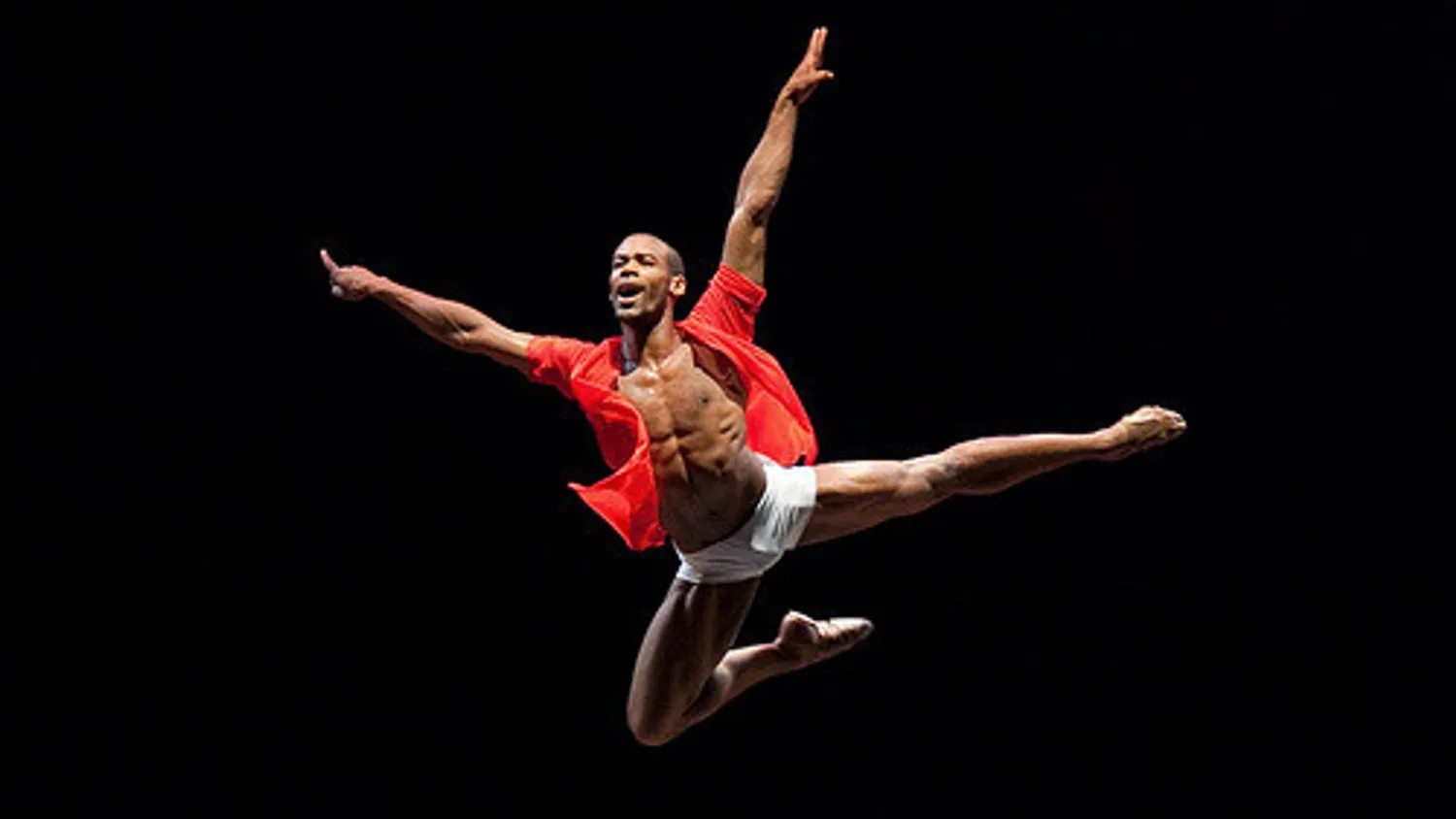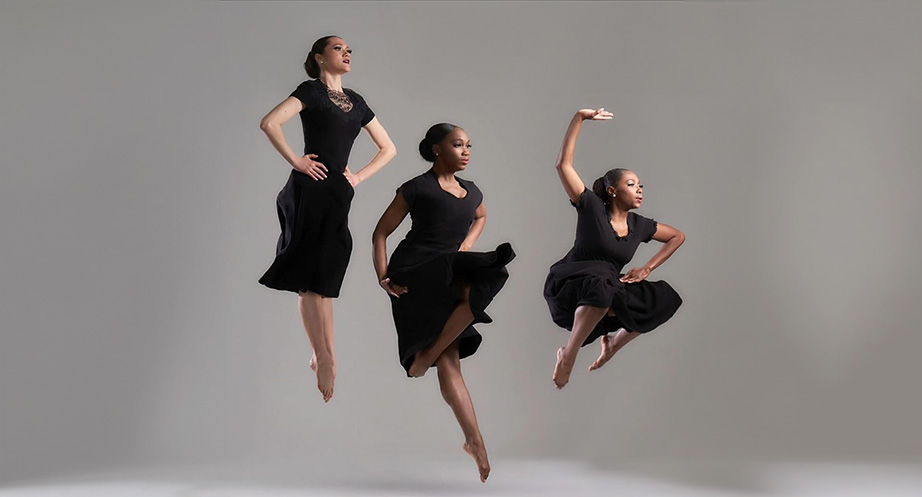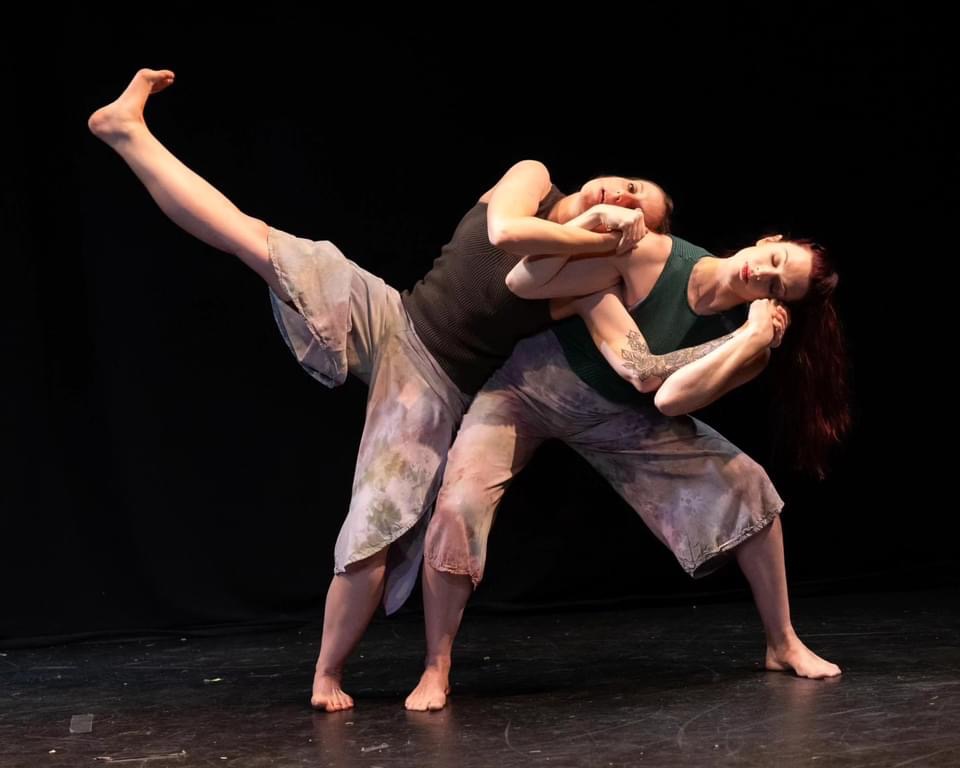
by Beth Kephart for The Dance Journal
Love walks down the street and sits in the park in the sun. It tenders its hand in apology or desire, corrupts the knees, revokes the arch of the foot. Love is the story, never finally told in words and, perhaps, never finally told at all, though one gets fleeting glimpses of it in the choreographic work of Jim Bunting.
Once a principal dancer with The Koresh Dance Company and now a popular Drexel University dance instructor and independent choreographer, Bunting spent the summer of 2009 setting passion to a song, then yielding the dance to Drexel students Melanie Carminati, a modern dancer, and Jesse Rathner, who has trained in hip-hop. Two afternoons each week the mirror-lined Forman studios was theirs. The point, at first, was simply to see what might happen within the framework of an uncommissioned collaboration.
“My main ambition,” says Rathner, “was to become a more confident and capable dancer.” Carminati, for her part, was eager to see how Bunting’s inclination to mix styles—jazz, ballet, ballroom—would tap into, and also stretch, her many years of dance training. Bunting saw possibility in the dancers’ souls, and in their ambition and reach. He saw as well echoes of his former dancing self.
“Both Melanie and Jesse bring a certain serenity to their dancing,” says Bunting, “and I identified with that. But they also bring an underlying fervency. These are the students who would stay after class to ask me questions, to test their phrasing, to ask whether I’d be choreographing anything soon. They were the ones that, if pushed just a bit harder—if given the freedom to be less polite with their own movements, or to take a gesture just six inches more to the left, six degrees more to the right—could be elevated from being very good dancers to extraordinary ones. I was, like they are, a dancer equally capable of calm and aggression. I wanted to return to that place as a choreographer.”
At the same time, Bunting had, he says, come to that juncture in life in which all that has been lived through—the transitory, the beautiful, the ruptured, the whole, the raw—might be embraced as gain, and story. “I have perspective, now, on the many things that have happened in my own life and in the things that have gone on around me. I am also interested—deeply—in the world around me.
“Choreography is not, for me, about locking myself into research or into a studio. It’s about taking a canoe trip with my father, or walking on the beach. It’s about going to baseball games and about watching the sharks navigate the tanks at the aquarium. It’s about immersing myself in the Philadelphia scene. Wherever I go, a story suggests itself. I seek this kind of experiential balance so that the work connects with audiences on a broader scale.”
Over the course of three months, Bunting met with the students for three hours each week. They worked first, he says, on elements of partnering, and trust. The music—drawn from the 1967 Ennio Morricone soundtrack for “Ad Ogni Costo”—was introduced early on—music that, Bunting says, suggests to him, the persuasive power of a complex love story.
For both Rathner and Carminati, the music initially suggested a bullfight. “I pictured the matador flashing his red cape at the bull and performing his own dance as he tried to avoid it,” says Rathner. “Over time, however, the music suggested more of a love story. These are two completely different ideas, I know, but they are similar in potential outcomes: If you are not prepared for either, the relationship won’t last.”
The elements of the dance itself were layered in, over time—the quiet strolls, the sudden turns, the lifts, the rondes, the floor work. Bit by bit, the five-minute dance emerged, a work, accented, in the words of Carminati, by “anticipation, crescendos, and accelerandos.”
The experience of working with an award-winning choreographer like Bunting has left its imprint on these two dancers just on the verge of their careers.
“One of Jim’s greatest qualities is his patience,” says Rathner. “Additionally, he allows for each dancer to have individual moments to shine and create his or her own back-story to the dance. This in turn allows the dancers to associate a more real feeling to the dance, and thus the performance quality becomes much more powerful. Often times he communicates his ideas by relating them to pedestrian movement. For example, if he asks for a gentle hand gesture, he may say it’s like caressing your girlfriend’s face.”
“Having worked with Jim before in large classes with other students it was different to work with him on a partnering piece,” says Carminati. “I feel that I was able to get to know him more as an individual than as my dance instructor. Jim communicates ideas first by allowing us to absorb the movements and make them our own; only later does he explain just what he is trying to portray. This particular piece of choreography has enabled me to grow as a dancer and as a person as well.”
If choreography is about what is imposed and what is received, about what is dreamed and what is realized, it is also about the shift space that lives somewhere between motion and narrative—about being fully present and also knowing when to walk away. “For the longest time throughout the process, my job is to see and the dancers’ job is to do,” says Bunting, “I remove myself only after the dancers take full ownership of the piece.
“I never feel, in the end, as if the dances that I choreograph are mine,” continues Bunting, whose first choreographed piece, “Immortal,” earned him a Pennsylvania Council on the Arts grant, and whose work has been commissioned by Koresh, the Pennsylvania Ballet, the University of the Arts, Walnut Street Theater, and the Philadelphia Fringe Festival. “The pieces are always a compilation of feelings, perceptions, losses, hopes—those things that belong to us all. The body can move in endless ways. There are, in this world, endless stories. The choreography that interests me is not prescriptive, it doesn’t tell a single story. It will suggest different things to different people, depending on where they happen to be in their lives.”
DanceSport Academy Showcase
October 25, 2009
Centennial Hall at the Haverford School
http://www.dancesportpa.com/
Beth Kephart is the award-winning author of ten books and the winner of a Pew Fellowships in the Arts grant, a Pennsylvania Council on the Arts grant, the Speakeasy Poetry Prize, and a grant from the National Endowment for the Arts. Her first book was a National Book Award finalist. House of Dance, her novel for young adults, was named a Kirkus best book of the year.
Beth_kephart at comcast.net
- Mascher’s Fresh Juice Returns June 17 & 18 - June 2, 2022
- Review: Dancefusion Elemental Forces - September 26, 2017
- Macaroni Necklaces and Jazz Squares: Dancer and Choreographer Rebekah Rickards - July 27, 2012






Now in its fifth year under the sole direction of champion dancer Scott Lazarov, DanceSport Academy in Ardmore, PA, has emerged as the leading Latin and Ballroom dance studio in the Philadelphia area. Its coaches are world-ranking professionals and award-winning choreographers. Its students are among the nation’s top amateurs. And on the last Friday of every month, the studio hosts a popular dance party that brings together dancers—amateurs and pros alike—from all across the region for general dancing and instruction.
On October 25th, Dancesport Academy will host a special performance featuring both professional and amateur dancers, as well as WMMR personalities, Kathy Romano, Matt Cord and Marisa Magnatta, who have agreed to dance on behalf of their favorite charities. The curtains will rise at Centennial Hall at the Haverford School (450 Lancaster Avenue, Haverford, PA) at 3:30 PM, and tickets can be bought in advance and at the door ($30 and $35, respectively).
More information can be found on our brand-new web site, URL, which features photographs of some of our internationally acclaimed dance instructors, a virtual tour of the studio, and a schedule of events, among other things.
For details Contact:
Name: Tirsa Rivas
Email: [email protected]
Address: 1W. Lancaster Ave. Ardmore, PA 19003
Phone: 610-642-2525
Website: http://www.dancesportpa.com
Comments are closed.